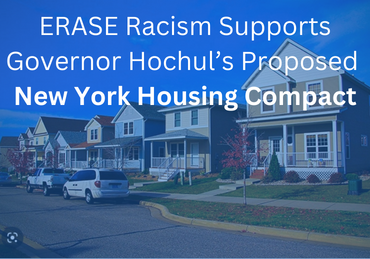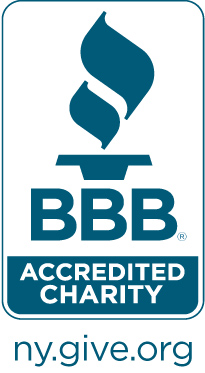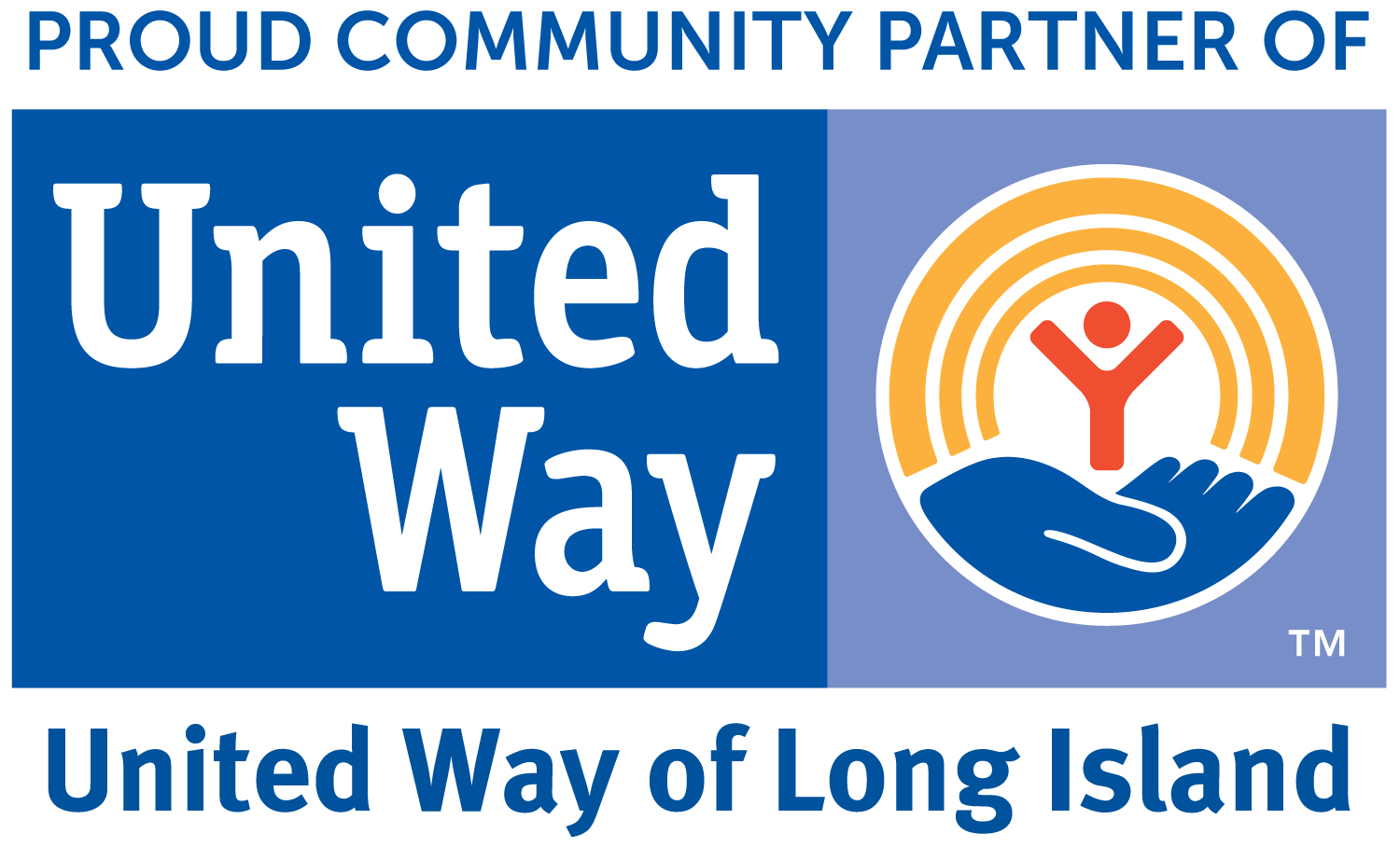
March 14, 2023
Governor Kathy Hochul has recently proposed a statewide strategy to address New York’s housing crisis – known as the New York Housing Compact. It’s of such significance that ERASE Racism is issuing this formal statement on it.
The Governor’s proposed New York Housing Compact represents a courageous first step in tackling the core challenge of housing on Long Island and across New York. It proposes solutions that will benefit all Long Islanders by increasing housing options. It begins to address the needs of our most vulnerable populations, and it starts to tackle the exclusionary zoning that is at the heart of Long Island’s standing as one of the 10 most racially segregated regions in the nation.
More specifically, the New York Housing Compact calls for 800,000 new homes across the state over the next decade. It includes local participation requirements and incentives to achieve housing growth in every community so that every part of the State is a partner in solving this urgent crisis. (About 16% of the housing would be on Long Island.) Far too often, affordable housing has been placed in already overburdened Black and Latino communities. It is time for localities everywhere to provide the range of housing, including affordable housing, needed.
It is important to note that, under the plan, if localities are unable to meet the specified goal, they can design a housing provision plan for a lesser percentage and receive an exemption from the state for up to six years to meet the goal. Municipalities that have already taken steps to increase housing can also receive credit for their previous or current work.
The New York Housing Compact also requires municipalities with MTA rail stations to locally rezone for minimum average density. When combined with other state aid, the plan provides for support for infrastructure needs such as wastewater treatment, groundwater protection, and other environmental improvements and protections.
The plan thereby offers welcome relief to parents, essential workers, young professionals, business owners, and seniors on Long Island where “a large majority of Long Islanders say that they want more housing options, including affordable and environmentally sustainable choices.”
ERASE Racism acknowledges the localities on Long Island that have already taken steps to build affordable housing and Transit-Oriented Development (TOD). But we also recognize that many localities spend more time seeking to maintain the exclusionary zoning that is at the heart of Long Island’s racial segregation – to the detriment of ALL of their community members.
It was announced earlier this month, for instance, that two long-running housing discrimination cases against the Town of Oyster Bay will move forward. As Newsday reports, “New York State’s Division of Human Rights sued the town in 2015 alleging that policies that give preference to town residents in two housing programs violate state anti-discrimination laws.”
A lawsuit against the Town of Islip is also moving forward. It alleges racial discrimination through land-use restrictions that prevent a proposed 58-unit apartment complex, including affordable and senior housing, from allowing rentals.
The proposed New York Housing Compact, as is the case inevitably with statewide proposals, does not represent everything ERASE Racism would have wanted. We would like to have seen more overt affordability mandates built into the plan, more specific infrastructure funding, a commitment that provisions will be made to use the Affirmatively Furthering Fair Housing (AFFH) rule (once finalized) to decrease segregation across Long Island, and more enforcement of laws that are already in place. We also know that progress begins with a first step, and this plan is an important and vital one that deserves our full support.
The lack of affordable housing on Long Island is an issue for seniors seeking to downsize and remain in their communities, essential workers unable to live where they work, and young professionals seeking to live on their own and build a life on Long Island, and low-income wage earners to describe just a few. As a result, as more jobs become available on Long Island, too many remain unfilled due to the lack of affordable housing.
The time to act is now, and the New York Housing Compact is the plan to support. Accordingly, ERASE Racism encourages New Yorkers to contact your state legislators via email or phone and urge enactment of the New York Housing Compact. For additional background, in light of misinformation that has spread about this plan, we provide below a list of myths – and the facts that set them straight.
Laura Harding
President
Combating Myths About the New York Housing Compact
Myth: This is a one-size fits all plan, and Long Island needs a specific plan
Based on the number of homes, some villages, hamlets, and towns would only have to introduce 12 homes over three years, while others would only have to add as little as 175 across the same three years. In addition, communities get to design the housing that fits their needs.
Myth: The Housing Compact overrides local control.
The New York Housing Compact promotes growth by removing barriers to housing production and availability, incentivizing new construction, and setting local housing targets across every city, town, and village. Local governments will be empowered to choose solutions that are tailor-made for their communities with funding, planning, and administrative support from the state, if needed.
Myth: They are trying to turn Long Island into New York City.
Under the Compact, localities will decide how to best meet their new home construction targets. From repurposing underutilized office parks and strip malls to offering new incentives towards multifamily buildings and accessory dwelling units, localities can choose how to tailor their strategies to increase housing supply without city-like density.
Myth: It will harm our environment and end the State Environmental Quality Review Act.
SEQRA will not be ended. The State will continue to exercise crucial safeguards that prevent environmental harm and ensure that public health remains a top priority.
Myth: There’s not enough money for infrastructure.
The plan includes a $250-million Infrastructure Fund. There is also funding from the recent $4.2-billion Clean Water Clean Air and Green Jobs Environmental Bond Act for environmental and community projects. State agencies, local governments, and partners can access funding to protect water quality, help communities adapt to climate change, and improve resiliency.
ERASE Racism agrees that there could be more infrastructure investment. This is something your legislators can advocate for, as they work to pass this bill.
Myth: Our schools and first responder services will be overwhelmed.
Currently, and in recent years, student enrollment has dropped, because families are moving out of New York. Also, teachers, firefighters, EMTs, and young people who work in our community service roles have been forced to leave Long Island due to the lack of housing options. Creating affordable housing for people who wish to remain on Long Island to work and raise families will help make our communities more safe and secure.
Myth: They will tear down single-family homes and build large buildings.
No one will be required to tear down a single-family home to accommodate this plan. TOD Zoning strengthens individual property owners’ rights and allows them to develop their property as they see fit.
Myth: Incentives are needed, but mandates are not.
New York State has already put forth many millions of dollars in incentives for more than a decade by way of significant Empire State Development funding for economic development including housing, and water quality funding for sewers. HUD provides millions in incentives annually to Long Island municipalities and the incentive-based Long Island Workforce Housing Act has hardly been a roaring success, with developers taking advantage of opt-out provisions.
New York’s history points to the need for remedies stronger than incentives alone to address the longstanding affordable housing crisis. The New York Housing Compact offers a series of tried and tested tools that have proven successful in suburbs, towns, and cities all across the nation.









